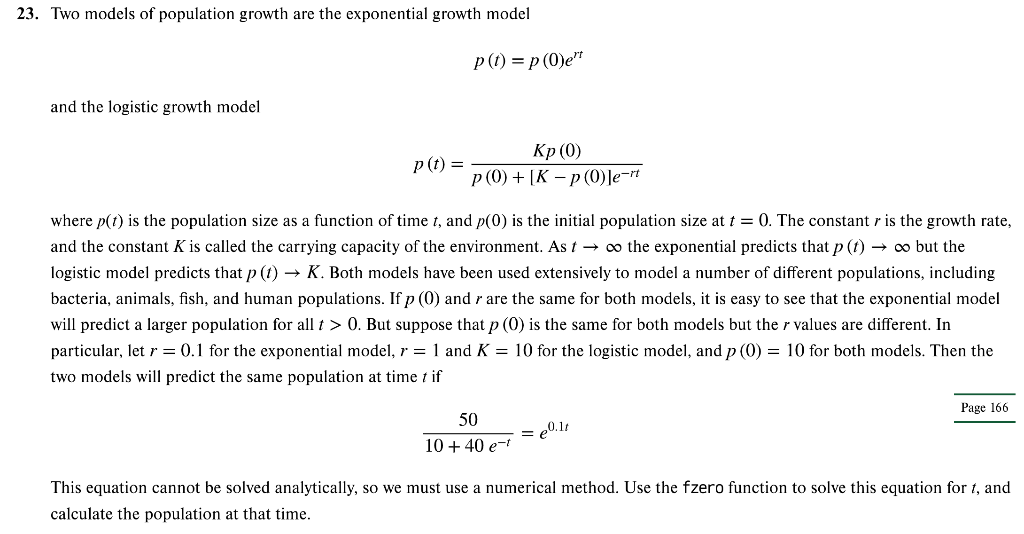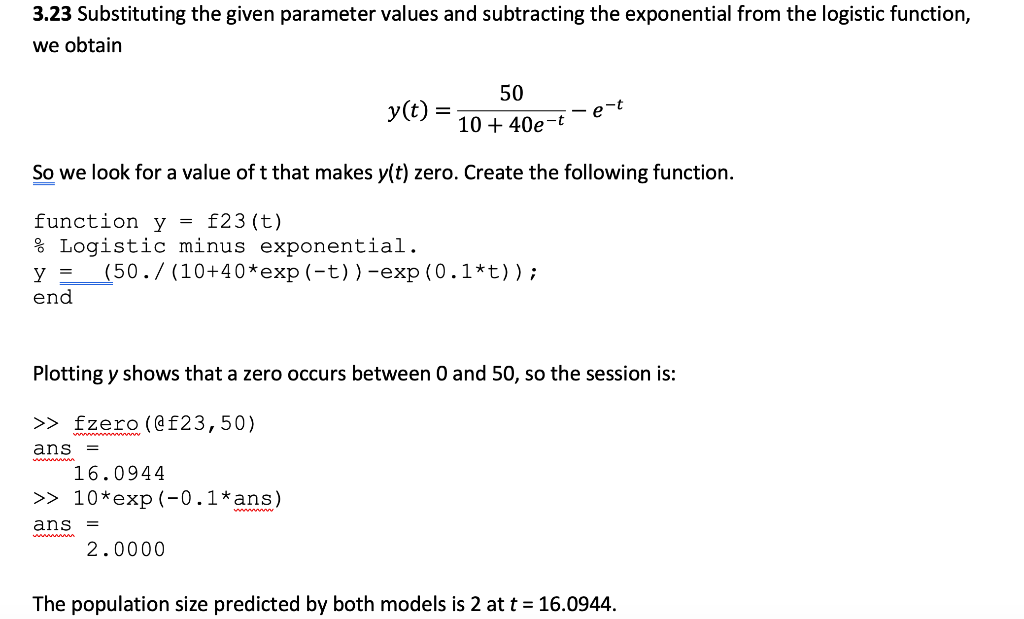Answered step by step
Verified Expert Solution
Question
1 Approved Answer
show how the answer below looks in Matlab. this is from chapter 3 of this book answer from answer key please show what it looks

show how the answer below looks in Matlab.
this is from chapter 3 of this book
 answer from answer key please show what it looks like in matlab
answer from answer key please show what it looks like in matlab

23. Two models of population growth are the exponential growth model p(t)=p(0)ert and the logistic growth model p(t)=p(0)+[Kp(0)]ertKp(0) where p(t) is the population size as a function of time t, and p(0) is the initial population size at t=0. The constant r is the growth rate, and the constant K is called the carrying capacity of the environment. As t the exponential predicts that p(t) but the logistic model predicts that p(t)K. Both models have been used extensively to model a number of different populations, including bacteria, animals, fish, and human populations. If p(0) and r are the same for both models, it is easy to see that the exponential model will predict a larger population for all t>0. But suppose that p(0) is the same for both models but the r values are different. In particular, let r=0.1 for the exponential model, r=1 and K=10 for the logistic model, and p(0)=10 for both models. Then the two models will predict the same population at time t if 10+40et50=e0.1t This equation cannot be solved analytically, so we must use a numerical method. Use the fzero function to solve this equation for t, and calculate the population at that time. Product: MATLAB for Engineering Applications Edition: 5th Author: William Palm ISBN10: 1264926804 3.23 Substituting the given parameter values and subtracting the exponential from the logistic function, we obtain y(t)=10+40et50et So we look for a value of t that makes y(t) zero. Create the following function. function y=f23(t) \% Logistic minus exponential. y=(50./(10+40exp(t))exp(0.1t)); end Plotting y shows that a zero occurs between 0 and 50 , so the session is: > fzero (@f23,50) ans = 16.0944 >10exp(0.1 ans ) ans = 2.0000 The population size predicted by both models is 2 at t=16.0944
Step by Step Solution
There are 3 Steps involved in it
Step: 1

Get Instant Access to Expert-Tailored Solutions
See step-by-step solutions with expert insights and AI powered tools for academic success
Step: 2

Step: 3

Ace Your Homework with AI
Get the answers you need in no time with our AI-driven, step-by-step assistance
Get Started


